John the Baptist and John the Evangelist witness to Jesus the Risen Saviour (1899)
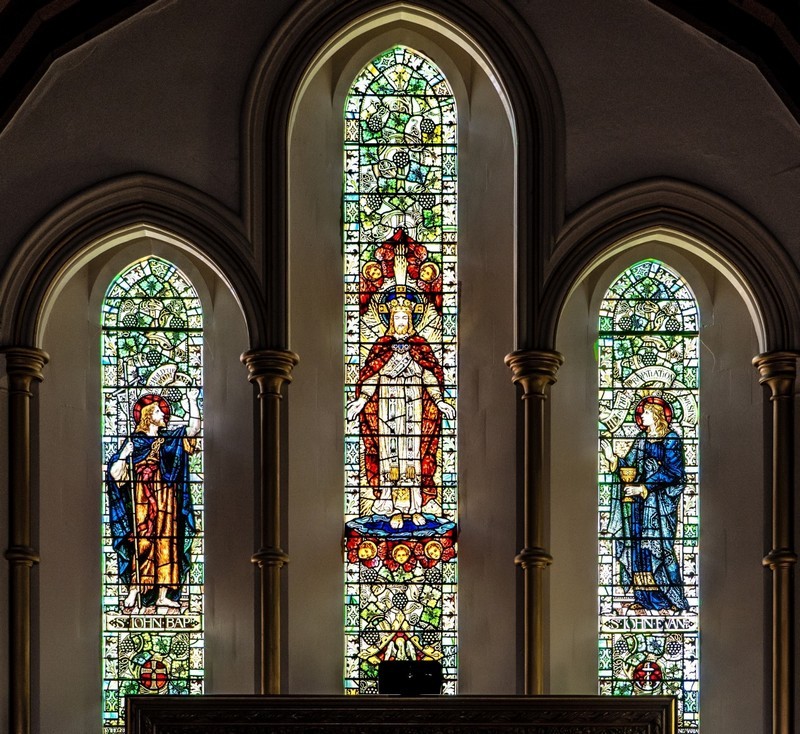
During the mid to late 1890’s, an influential figure at Christ Church was Mrs Mary Bevan. Married to a wealthy banker called Wilfred Bevan, they possessed a house in Knightsbridge with ten servants, as well as a home in New Malden called Coombe Court.
In the Parish Magazines of this period, the Reverend William Allen Challacombe makes numerous references to Mrs Bevan’s generosity and hard work for Christ Church. This included using Coombe Court for bazaars aiming to raise funds for both the 1894 extension and the school at Elm Road built in 1896, as well as donating various gifts to the church such as a carpet for the chancel, chalices and kneelers. Her daughter Miss Lucy Bevan led one of the Sunday afternoon Bible classes for children. Mrs Bevan was also involved in visiting those who needed help causing Mr Challacombe to write in September 1898 Magazine: ‘As a church worker, Mrs Bevan has been much beloved by those whom she visited. Absence of ostentation, ready sympathy, strong personal, faith in Christ, these powers have helped her to win her way into the homes and hearts of many who will never forget her kindly visits’.
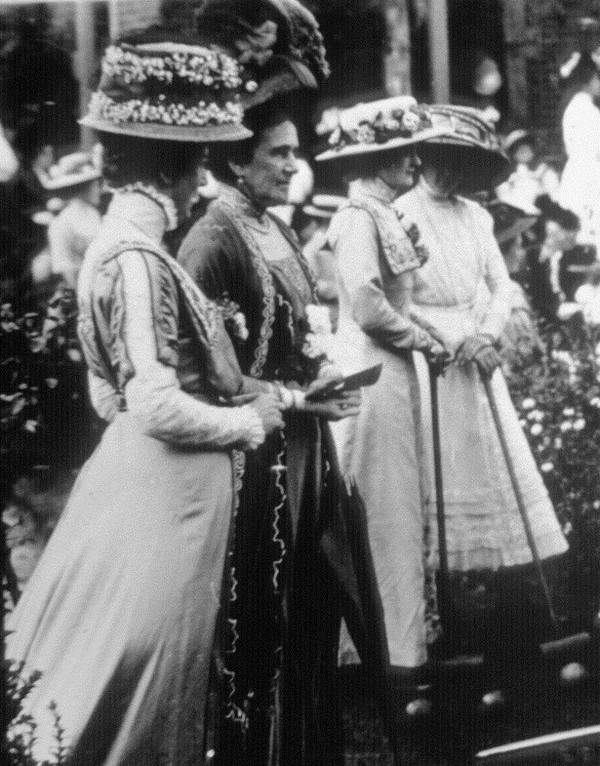
In that same year, Mrs Bevan announced that she was moving away from Christ Church, although she continued to visit the church on a very regular basis. As a parting gift, she decided to give a new window for the east wall of the chancel. By this stage, the Sim window had stood in the east wall for over twenty years but it was with that family approval that the window was moved to the west wall instead. In its place and funded by Mrs Bevan was a new window depicting Jesus the Risen Saviour. The window was produced by James Powell and family, the same company that had made the window given in memory of Arthur Streeter three years earlier and was unveiled on Easter Day, 2nd April 1899.
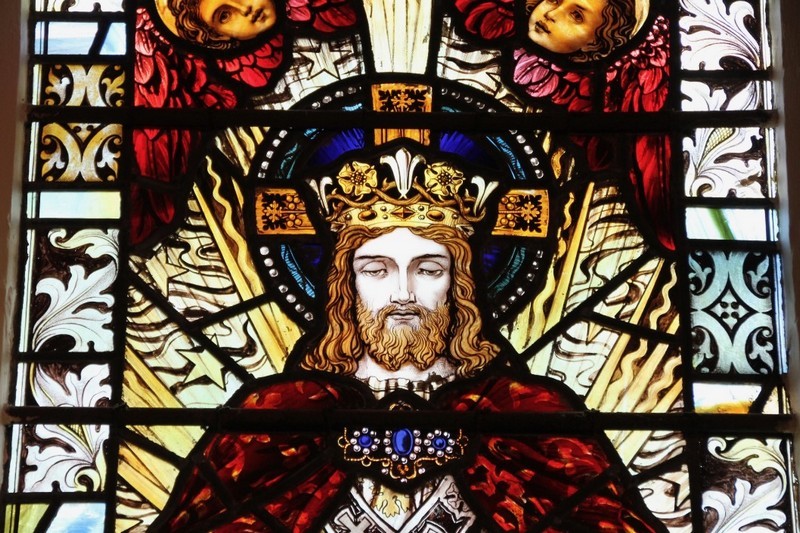
It seems that the original plan was to fill the two smaller windows either side of the central one at some point later on. However, around that time a new family called the Whiteheads had arrived at Christ Church: Mr Benjamin Whitehead, his wife Annette and his three unmarried sisters, Sophia, Ida and Kate. Their parents, Benjamin and Anne Whitehead, who had owned a pub in Holborn, had died the year before. Following the unveiling of the central window, Mr Whitehead informed Mr Challacombe the family would like to give two other windows to Christ Church in memory of their parents.
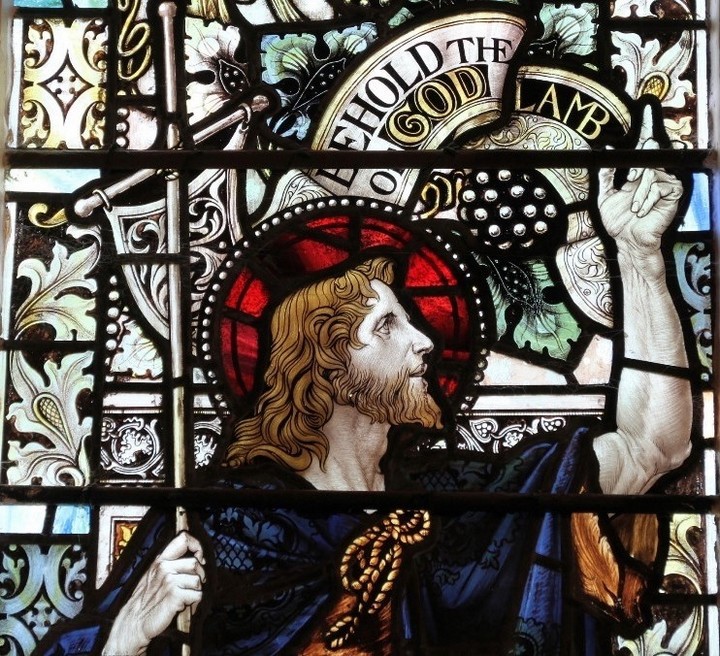
These windows, depicting John the Baptist and John the Evangelist witnessing to Christ were unveiled in a special service on All Saints Day on 1st November 1899.
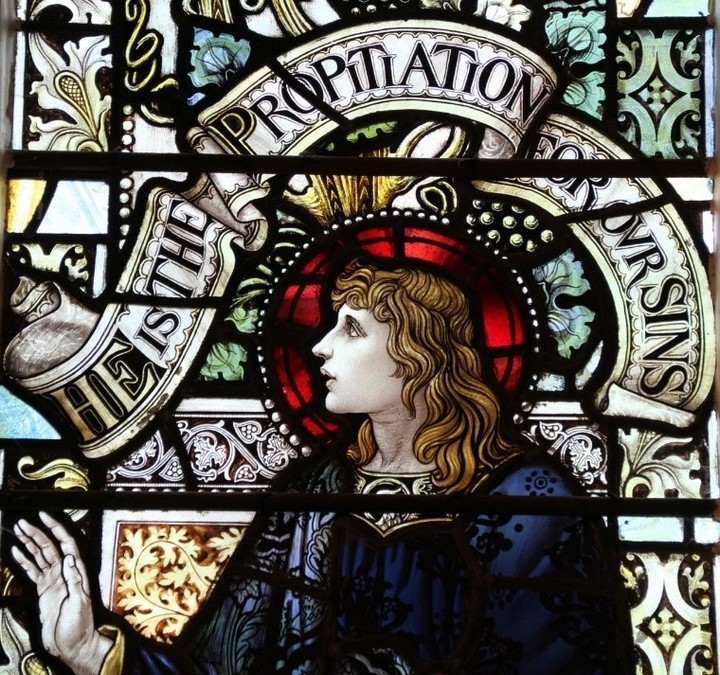
Reporting the event, the Surrey Comet declared: ‘The two windows are figurative of St John the Baptist and St John the Evangelist, respectively representing the old covenant and the Christian church, and the subjects of the three windows are in perfect harmony with one another as far as general treatment is concerned’.
Mr Challacombe commented in the November Parish Magazine: ‘These sacred pictures will constantly lead our thoughts to the blessed ones in Paradise, while they will speak to us of the Ascended Lord as the Lamb of God, who became the Propitiation for our sins’.
Another feature of the windows is their presentation of the three cardinal Christian virtues of faith, hope and love under their Latin words ‘charitas’, ‘fides’ and ‘spes’.
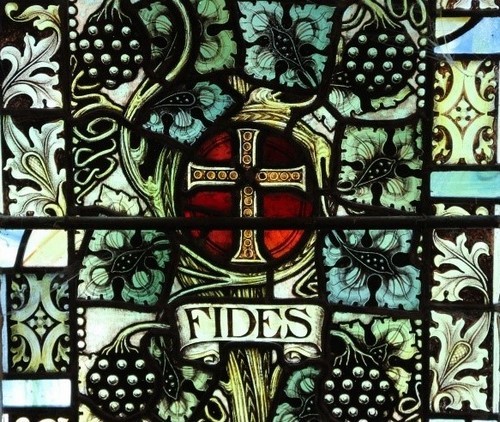
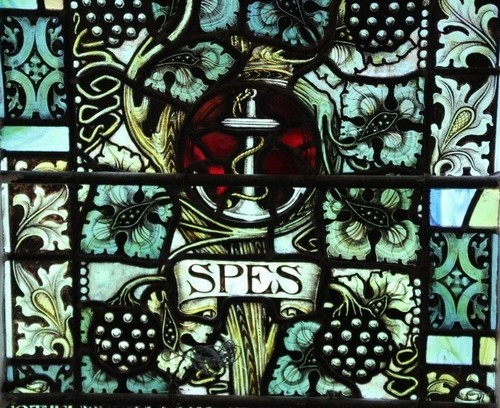
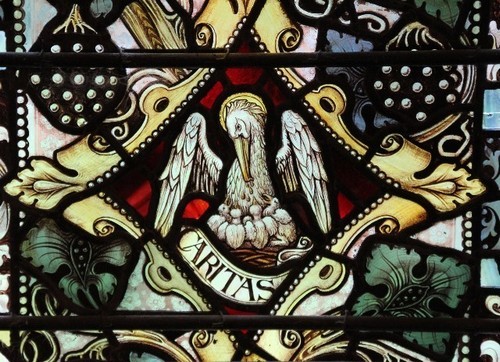
Below the figure of Jesus in the central window and above ‘charitas’ is the image of a pelican feeding her young. According to myth, the pelican does this by plucking at her own breast to feed them with he own blood. At the time the window was commissioned, this was commonly used as a symbol of the significance of the death of Jesus Christ. It can also be seen at Christ Church in the window given just a few years later in memory of Frederick Somner Merryweather.
The other noteworthy aspect of the windows is their major use of grapevine imagery to reflect their presentation of faith, hope and love as the fruits of the new creation brought by the death and resurrection of Jesus Christ. Similar grapevine imagery is seen in the background of the window given a few years earlier in memory of Herbert Streeter.
Mrs Bevan continued her regular visits to Christ Church and generosity to the church up until her death in 1938. Benjamin Whitehead died in 1926 whereupon his wife and sisters moved to Devon, dying there between 1944 and 1956.
The subsequent history of these windows at Christ Church is also quite an interesting one largely due to two developments in the 1920’s. Dr George Cowen was Churchwarden of Christ Church from 1897-1903 and following his death a large reredos was placed behind the Communion Table in his memory blocking out most of faith, hope and love!
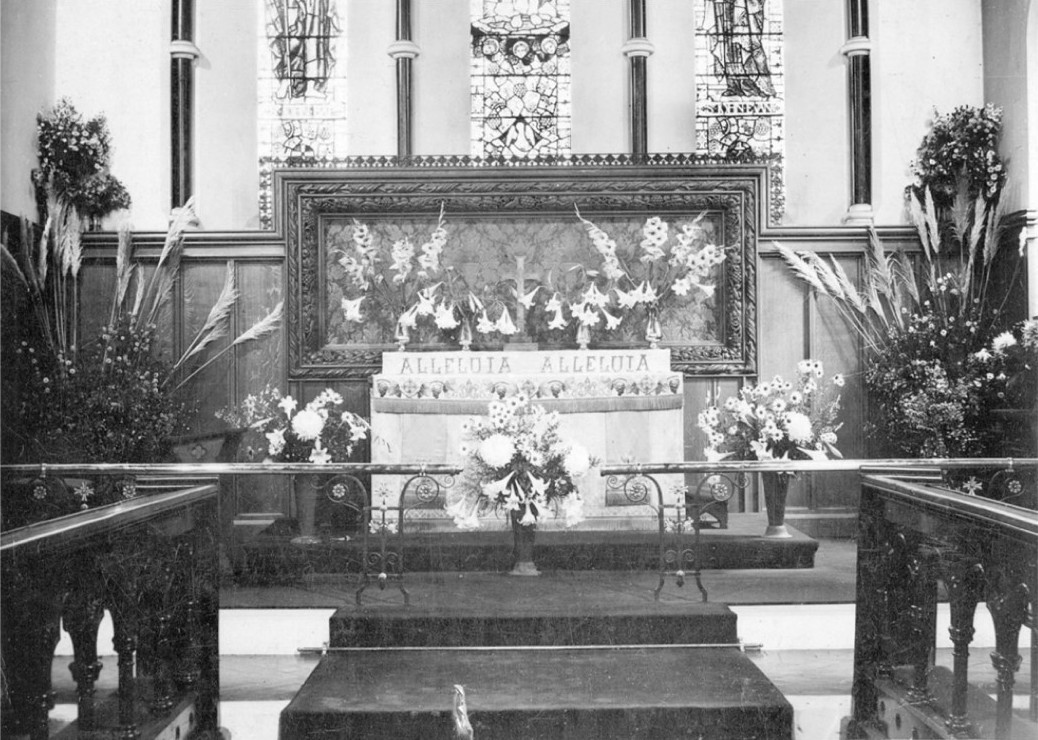
More significantly, the surprising decision was taken in January 1920 to erect a rood screen across the chancel, alongside a names tablet, in memory of those who had died during the First World War. This screen remained in front of the windows until 1965 when it was transferred to the back of Christ Church before its final removal in 2006.
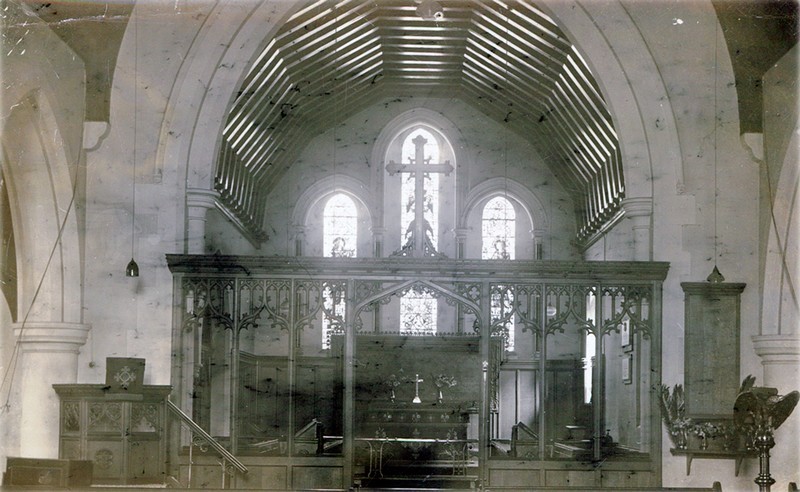
A further factor impeding the view of the east windows was a tree beyond them which grew to the point of almost preventing any light coming through them.
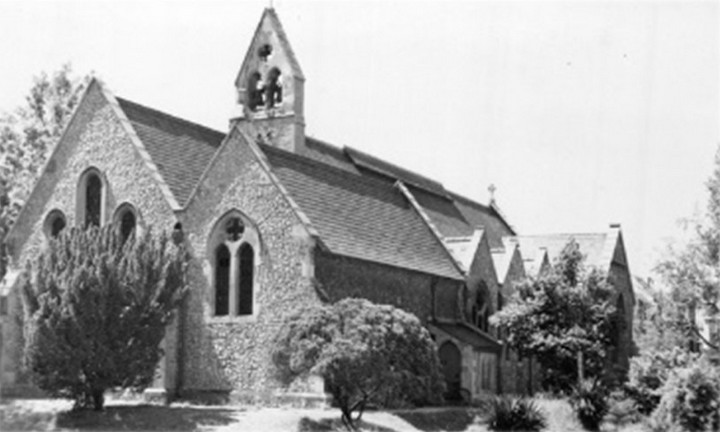
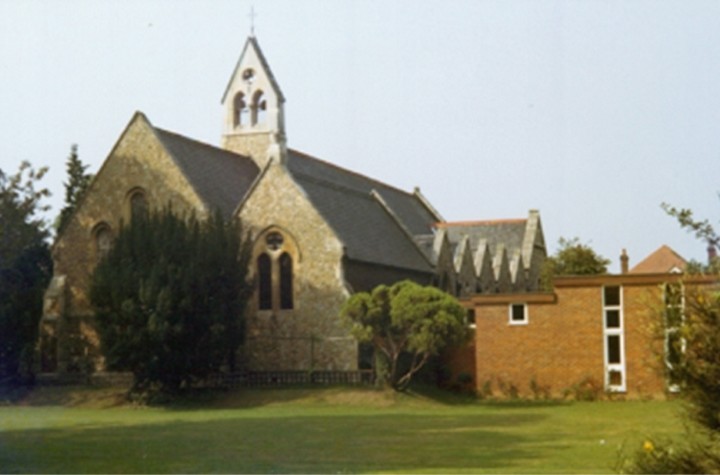
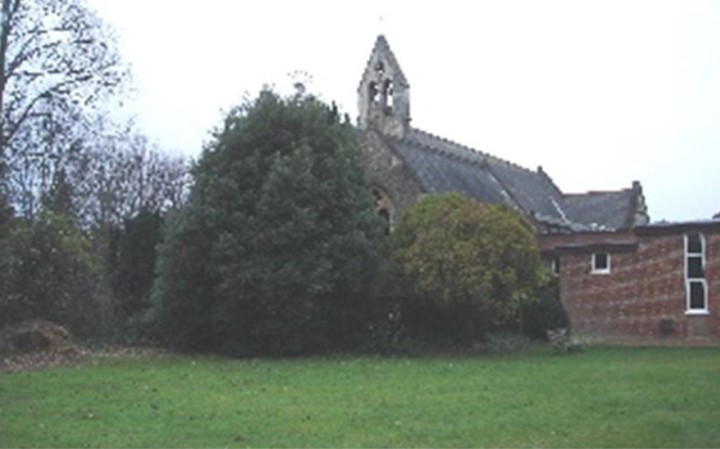
These pictures show the progress of the tree from 1953, 1966 and 2004.
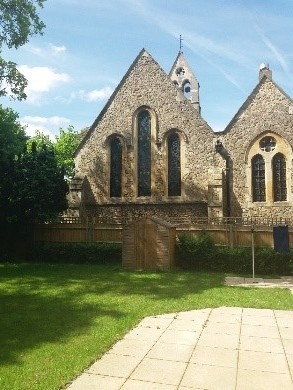
The last is the current view from the new Vicarage garden. Now the tree has finally been removed, the light shining through them has allowed the window to be seen in all its glory.
You can listen to the sermon from the Windows on the Gospel sermon series below.
| Jesus the Good Shepherd and the Light of the World (1896) | The Merryweather Window (1902) |
